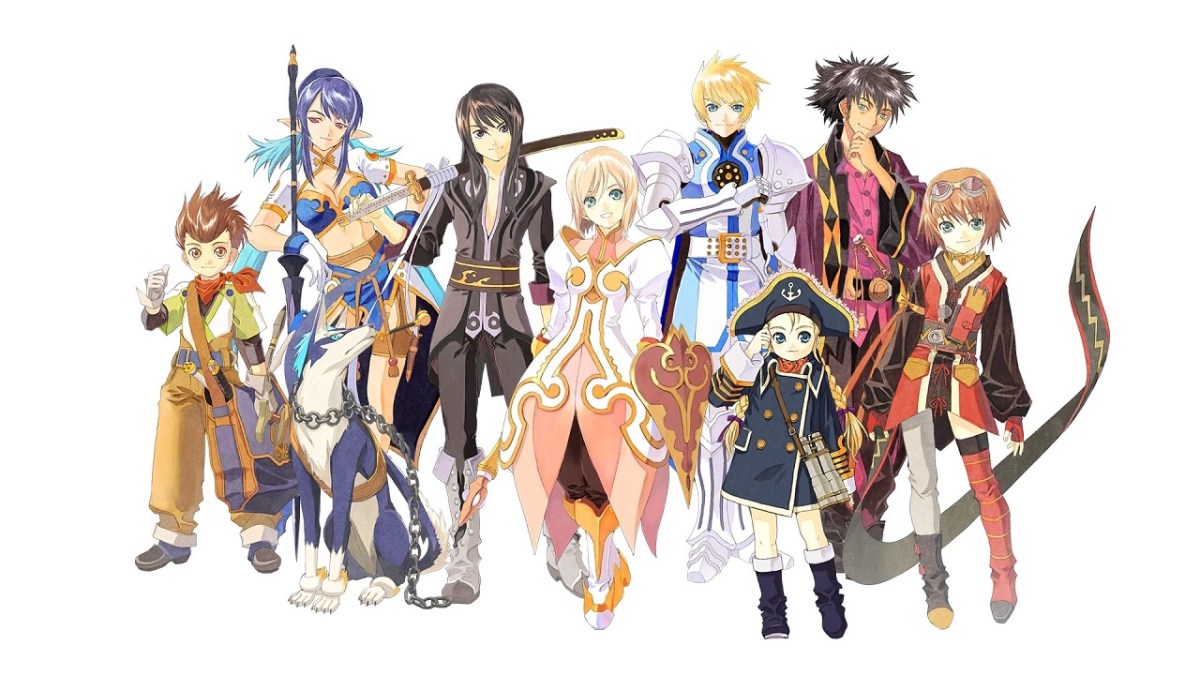After 10 long years, Tales of Vesperia is back, bringing both the best and worst of an old generation of JRPGs to a new generation of players.
Initially released in 2008, Tales of Vesperia represents the pinnacle of Tales titles using the classic Linear Motion Battle System before Tales Studio sought to redefine the formula in each future entry. The result was nothing short of brilliance, receiving so much praise from fans that it’s often regarded as one of the greatest — if not the greatest for some — in the series.
Yet, despite these accolades, it remained one of the Tales titles that many fans had the least amount of familiarity with.
Why? Because it initially released on the Xbox 360 and only made its way to the PlayStation 3 a year later — but only in Japan. In other words, unless you actually owned an Xbox 360 — something that would be unlikely at the for hardcore JRPG fans — or purchased an imported copy and used a translation guide, then you were out of luck.

Fortunately, Bandai Namco has sought to rectify the situation by bringing the title to all modern platforms in the form of Tales of Vesperia: Definitive Edition, finally allowing players to thoroughly experience what they’ve missed out on for all these years.
And experience it they shall. With updated full HD graphics running at 60 FPS, new music tracks, plenty of pre-packaged DLC and two new characters (from the PS3 version), Bandai Namco wasn’t kidding when it slapped “Definitive Edition” on the label.
But no label can save it from the one thing it’s suffering from the most: it’s age.
Tales of Vesperia is 10 years old now, putting it in a unique territory where it’s still recent enough to not be considered a classic, but can be looked back upon by fans as if it were. What’s more, we aren’t dealing with a game that was deliberately designed to mirror the features of those that would be classic either. This isn’t an issue of going back 25-30 years to find ourselves in an Elusive Age; rather, it’s like simply going back to 2008 — a time that is clearly in the past, but shares enough commonalities with the present to be almost indistinguishable from it…until something prompts reality to set in.
Thankfully, if there’s one area of the game where age isn’t a factor, then it’s the story.

One of the leading reasons why Tales of Vesperia receives so much praise is because of how it approaches the concept of morality. The game’s protagonist, Yuri Lowell, is a departure from the typical Tales protagonist with an aloof, near-frivolous exterior hiding an individual wracked with frustration and misgivings about society and the world at large. Of course, he, just like all the other protagonists, strive to make the world a better the place, but the difference is that while their morality is black and white, his is definitively grey.
What would a typical protagonist do if a noble stole something that belongs to a friend of theirs? Probably petition to get it back or offer to do a quest in exchange, right? Well, that’s not Yuri’s style. How about if a noble is abusing the townspeople, going so far as to kill them just because it’s an option? The protagonist would probably work alongside the proper authorities to bring him to justice. As for Yuri? Definitely not that.
This moral grayness permeates the entirety of the game, causing what would typically be a stock fantasy setting dripping with world-altering crystals, unique locations and mystical creatures, to not just reference subjects such as classism, political corruption and racism, but have the characters actually deal with them and prompt the player to think about how they might act in a similar situation.
Naturally, this all leads to some strong character arcs that sees everyone change drastically compared to when they started out. For instance, Estellise Sidos Heurassein, a princess who has spent much of her life reading books behind castle walls, is naive and optimistic to a fault, but eventually comes to learn through her interactions with the world and other cast members that it’s impossible to help others with merely good intentions; while Flynn Scifo, Yuri’s childhood friend who became a knight in order to change the system from within, is repeatedly forced to recognize that his adherence to the law him often leaves him with no tangible route to make the change that he seeks. Everyone gets put through the grinder time and time again, and they come out better for it.
But it’s not just their emotions and psyche that will be put through the grinder, their bodies will too as they face off against man and beast alike.

On the surface, combat in Tales of Vesperia is the same as it’s ever been, with four party members — each with a unique set of skills and abilities — squaring off against any number of foes in a fast-paced affair and then optionally cooking afterward. The core difference here is that the combat takes on a more methodical, deliberate tone due to increased recovery times of attacks and artes, forcing players to actually think about what they’re doing, and not just button mash their way to victory. Some enemies hit rather hard (the game in general is harder than most other titles in the series) and there are some noticeable difficulty spikes (looking at you Gattuso) that will force players to constantly reassess their tactics and make sure they’re using everything at their disposal, whether they be Burst Artes, special attacks that can be unleashed after using certain moves while in a powered up state; Fatal Strikes, techniques that can defeat regular enemies in one hit once the right conditions are met; or the time-tested Mystic Arte which can unleash plenty of damage to any enemy unfortunate enough to get hit by one.
Interestingly, the most important steps you can make towards victory actually takes places before the battle even starts. Attached to many of the weapons that you can find/buy are skills that can eventually be learned once you’ve spent enough time using them. You’ll notice that your party starts off relatively weaker compared to other Tales parties, and that’s because the game expects you to make ample use of the skill system at all stages of the game. This is easier said than done at the start, however, with key skills — such as Combo 1 (extends basic combos by one) — costing 10 points to equip when you might only have 22 points in total. Of course, given enough time, that will no longer be an issue, and you’ll have more freedom in your options, even being able to partake in the unique benefits that selecting certain skills in unison will provide.
All in all, the combat is still fun, it will just take some time getting used to depending on your expectations. If you’re familiar with older titles, then Vesperia being this way will not be a surprise in the least. As for those who are more familiar with newer titles like Berseria or other modern action-oriented JRPGs? Mash at your own peril.
Unfortunately, this is about the time when reality sets in — the time when we’re inevitably forced to realize we’re playing a game from 2008 masquerading as one from 2019. The story and combat might be a tad flawed in some respects, but they still hold up. But the remaining aspects of the game didn’t hold up quite as well.

No matter how you slice it, anything linked to progression and exploration will feel terrible in 2019 — especially if you aren’t familiar with how Tales used to do things. In newer entries, any and all information needed to move the story forward or find something of importance is available to the player at all times. Comparatively, Vesperia says little and shows even less. Are you stuck inside a town and don’t know what to do in order to progress? The game doesn’t give you any hints beyond what’s stated in the Synopsis tab in the pause menu and even that isn’t saying much. Want to get your bearings or find the location of the local hotspots? Too bad, there are no town or minimaps to speak of. Really, the only mercy the game provides is that it won’t let you leave town alone and get yourself killed when you should have been tracking down your teammates.
In particular, the absence of such features will make themselves apparent when sidequests come into play. Tales of Vesperia, much like other entries in the series, has plenty of sidequests to enjoy, but without any cues or hints, unless you go out of your way to find them — even going so far as to constantly visit old towns — you’re likely to miss them. Granted, the requirements aren’t as strict when compared to Record of Agarest War 2 or Valkyrie Profile, but they’re still fairly easy to miss, which is a damn shame because aside from weapons, artes and costumes, many of the characters’ backstories can only be understood by completing these events.
Perhaps it might be more accurate to say the lack of map info and hints won’t make themselves apparent in this regard because you’ll have no idea that you missed anything in the first place.

Lastly, as you might be aware, Tales of Vesperia: Definitive Edition is based on the PS3 version — which, again, was only available in Japan. The good news is that the extra content came with a complete English dub. The bad news? According to Troy Baker, Yuri’s VA, Bandai Namco decided to not have him reprise his role for these segments. You might not notice at first, falling for this imitation Troy Baker (Grant George) all the while, but you’ll eventually notice and all you’ll be to think about from that point on is how that isn’t Troy Baker.
And Yuri isn’t the only victim here: several other characters got new voice actors too and all attempts to even feign any similarities to the originals are cast to the wind. Granted, you can circumvent all of this by switching to Japanese audio, but that somewhat defeats the purpose of making Tales of Vesperia: Definitive Edition available in English in the first place. Ultimately, the inconsistency isn’t a deal-breaker by any stretch, but it’s certainly jarring.
Really, that might be the defining factor in how you ultimately view Tales of Vesperia: Definitive Edition — it might look like a JRPG from 2019, but you’ll be burned if you expect it to play (or sometimes sound) like one. Conversely, those who temper their expectations (or simply know what’s coming) will know that this is a game from 2008, treat it like one and enjoy it.

The Verdict
Tales of Vesperia: Definitive Edition is in a unique territory where it’s still recent enough to not be considered a classic, but can be looked back upon by fans as if it were. With a more measured approach to combat, a distinct lack of QoL features and uneven voicework, there’s no doubt that this is a game from 2008 — even if it looks like one from 2019.
However, even with those faults considered, Vesperia was great back in 2008 and it’s just as good in 2019. Just like with Shining Resonance Refrain, the mindset you approach this game with is critical. You won’t be doing yourself (or the game) any favors if you approach it with a modern lens, but it’s hard not to fall in love when judged on its own merits. With its enjoyable characters, interesting story, beautiful aesthetic and fun combat, ten years was worth the wait.











Published: Jan 11, 2019 11:48 am